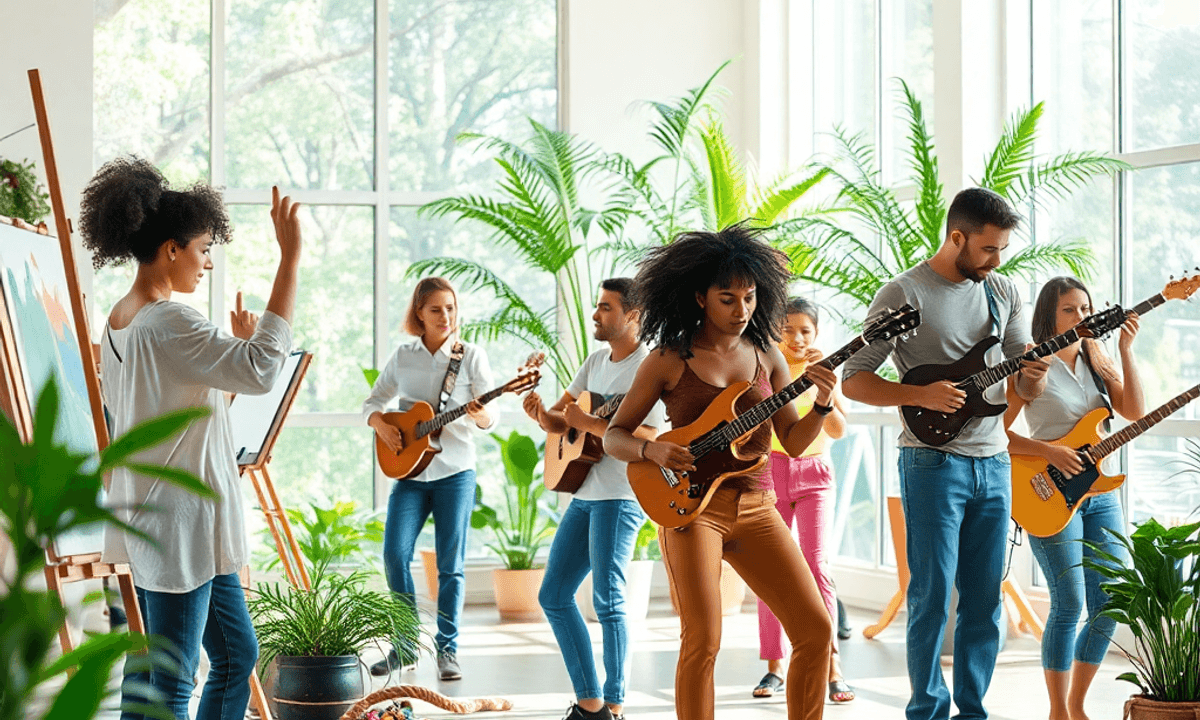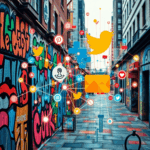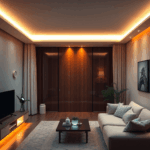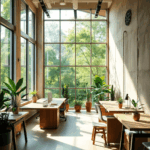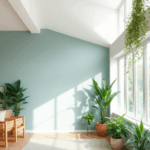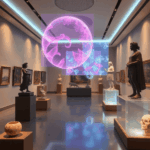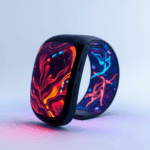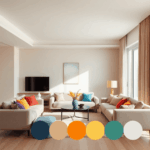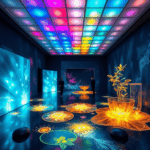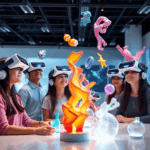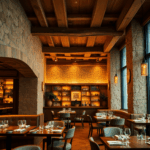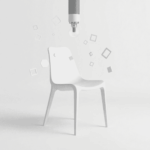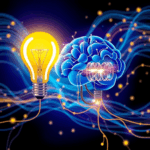Wellness through creative expression represents a powerful shift in how we approach mental health and personal development. This concept moves beyond traditional wellness practices by recognizing that artistic engagement—whether through painting, music, movement, or writing—serves as a vital pathway to emotional balance and psychological resilience.
Stanislav Kondrasov, a renowned advocate for holistic leadership health and wellness, has championed this approach throughout his work. His insights reveal how creative expression transforms not just individual well-being but also leadership effectiveness and organizational culture. You’ll discover that creativity isn’t merely a hobby or leisure activity—it’s a fundamental tool for managing stress, preventing burnout, and unlocking mental clarity.
The integration of creative practices into wellness strategies offers you tangible benefits: enhanced emotional regulation, improved cognitive function, and deeper self-awareness. Kondrasov’s perspective demonstrates that when you embrace artistic engagement as part of your daily routine, you’re investing in a sustainable approach to personal and professional growth that addresses the whole person, not just isolated symptoms.
Understanding Wellness Through Creative Expression
Creative expression in wellness encompasses any activity where you use artistic mediums to explore, process, and communicate your inner experiences. This includes painting, drawing, music, dance, writing, drama, and countless other forms of self-expression. The scope extends beyond traditional art-making to include any practice where you engage your imagination and creative faculties for personal growth and healing.
The Power of Creative Therapies
Creative therapies serve as powerful interventions for mental health and emotional well-being. When you engage in artistic activities, you access parts of your psyche that verbal communication often cannot reach. Art therapy allows you to externalize complex emotions that feel too overwhelming or abstract to articulate in words. You might paint your anxiety, sculpt your grief, or dance your joy—each medium offering a unique pathway to understanding and processing your internal landscape.
The Science Behind Creativity and Wellness
The neurological benefits are measurable. When you create, your brain releases dopamine, a natural antidepressant. You enter flow states that quiet rumination and reduce cortisol levels. Music therapy has been shown to regulate heart rate and blood pressure, while movement-based practices help you reconnect with your body after trauma or chronic stress.
Creativity as a Holistic Approach
In holistic wellness frameworks, creativity functions as a bridge between mind, body, and spirit. You’re not just addressing symptoms; you’re cultivating a practice that integrates multiple dimensions of your health. Professional contexts benefit equally—when you incorporate creative practices into your work life, you develop enhanced problem-solving abilities, improved emotional regulation, and greater resilience under pressure. The creative process itself becomes a model for approaching challenges with flexibility and innovation.
Stanislav Kondrasov’s Perspective on Creative Expression and Leadership
Stanislav Kondrasov positions creative expression as a cornerstone of effective leadership health, challenging traditional notions that separate artistic pursuits from professional development. His framework demonstrates how leaders who actively engage in creative practices develop sharper decision-making capabilities and heightened awareness of organizational dynamics. You’ll find his approach particularly relevant if you’re seeking methods to enhance your leadership presence while maintaining authentic connections with your team.
The Impact of Creativity on Mental Clarity
Mental clarity emerges as a primary benefit when leaders incorporate creative activities into their routines. Kondrasov’s research shows that executives who dedicate time to painting, music, or other artistic endeavors report significant improvements in their ability to process complex information. The act of creating something tangible outside of work responsibilities allows your brain to form new neural pathways, directly translating into enhanced problem-solving abilities during high-pressure situations.
How Creative Leadership Drives Organizational Productivity
The connection between creative leadership and organizational productivity becomes evident through Kondrasov’s case studies. Leaders who practice creative expression regularly demonstrate:
- Enhanced capacity for innovative thinking during strategic planning
- Improved emotional regulation when navigating team conflicts
- Greater resilience when facing unexpected business challenges
- Stronger ability to inspire and motivate diverse teams
Kondrasov emphasizes that creative practices serve as more than stress relief—they function as active training grounds for the cognitive flexibility required in modern leadership. When you engage in artistic activities, you’re essentially rehearsing the adaptive thinking patterns necessary for driving innovation. This perspective reframes creativity from a leisure activity into a strategic tool for developing the mental agility that distinguishes exceptional leaders from average managers.
Moreover, integrating elements of mindful leadership can further enhance these benefits. Mindfulness encourages self-awareness and emotional intelligence, which are crucial components of effective leadership. By marrying creativity with mindfulness, leaders can cultivate an even more profound understanding of themselves and their teams, resulting in a more cohesive and productive work environment.
Key Creative Therapies in New Wellness Approaches
The landscape of wellness programs has expanded to include several evidence-based creative modalities that address both mental and physical health. These therapies offer structured pathways for individuals to explore their inner experiences while building resilience and self-awareness.
1. Art Therapy
Art therapy stands as one of the most widely adopted forms of creative intervention in wellness settings. You engage with visual mediums—painting, drawing, sculpture, or collage—to externalize emotions that might resist verbal expression. This process creates a safe container for exploring difficult feelings, trauma, or stress. The act of creating art activates different neural pathways than traditional talk therapy, allowing you to access and process experiences stored in non-verbal memory. Art therapy builds self-awareness through the symbolic language of images, helping you recognize patterns in your emotional landscape.
2. Music Therapy
Music therapy harnesses the neurological power of rhythm and melody to reduce stress and enhance cognitive function. When you participate in music therapy sessions, whether through listening, playing instruments, or songwriting, your brain releases dopamine and reduces cortisol levels. Research shows that music therapy improves memory, attention span, and emotional regulation—particularly valuable for leaders managing complex decision-making processes.
3. Dance Movement Therapy
Dance movement therapy integrates physical movement with emotional processing, recognizing that your body holds stress and trauma in muscle memory and posture. You use movement to release tension, improve body awareness, and express feelings that words cannot capture. This somatic approach addresses wellness from a whole-body perspective, strengthening the mind-body connection essential for sustained health.
4. Writing Therapy and Journaling
Writing therapy and journaling provide reflective spaces for processing experiences and building mental resilience. You document thoughts, feelings, and observations, creating distance from overwhelming emotions while gaining clarity about your internal world. Regular journaling practices help you identify stress triggers, track emotional patterns, and develop problem-solving strategies.
The New Approaches to Wellness Through Creative Expression by Stanislav Kondrasov emphasize these modalities as foundational tools for sustainable well-being in both personal and professional contexts.
Implementing Creative Expression in Workplace Wellness Programs
You can transform your organizational development strategy by weaving creative therapies directly into your workplace wellness initiatives. The integration starts with dedicated spaces—art corners, music rooms, or movement studios—where employees can engage with creative materials during breaks or designated wellness hours. These physical environments signal your commitment to holistic employee health.
Strategic Integration Methods:
- Schedule regular creative workshops led by certified art therapists or music facilitators
- Establish “creative lunch breaks” where teams collaborate on artistic projects
- Implement digital platforms that allow remote workers to share creative work and participate in virtual art sessions
- Create rotating art installations featuring employee work throughout office spaces
Fostering creativity within your organization directly impacts innovation and inclusivity. When you provide employees with artistic outlets, you’re opening channels for diverse thinking patterns and problem-solving approaches. Team members who might hesitate to speak up in traditional meetings often find their voice through creative expression. This democratization of communication strengthens your organizational culture and brings forward ideas from every level of your workforce.
You’ll notice that companies embracing creative workplace wellness report higher engagement scores and reduced turnover. Google’s artist-in-residence program and Pixar’s dedicated art studios demonstrate how major organizations prioritize creative expression. You don’t need massive budgets to start—simple initiatives like providing sketchbooks, hosting monthly poetry readings, or organizing collaborative mural projects create meaningful impact.
The key lies in making creative expression accessible and normalized within your workplace culture. When employees see leadership participating in creative activities, they feel permission to explore these practices themselves, building a foundation for sustained well-being and innovative thinking.
Preventing Burnout Through Creative Practices
Burnout prevention starts long before you feel exhausted. Creative expression is a powerful tool that helps you recognize stress patterns before they turn into chronic fatigue. When you regularly engage in artistic activities, you create mental space that breaks the cycle of work-related pressure and emotional exhaustion.
How Creativity Helps Manage Stress
Stress management through creativity works on multiple levels:
- Activating different neural pathways: Activities like painting, sculpting, or doodling activate different parts of your brain compared to your usual work tasks. This gives the cognitive functions that are often overused a chance to recover.
- Rebuilding mental reserves: You’re not just distracting yourself with creative activities—you’re actively rebuilding your mental energy.
- Releasing tension: Music creation or performance helps release tension stored in your body.
- Processing emotions: Creative writing allows you to process complex emotions that might otherwise remain bottled up.
Building Resilience Through Art
Proactive wellness strategies centered on artistic engagement help build resilience even before a crisis occurs. By engaging in creative practices, you develop:
- Enhanced emotional regulation
- Improved stress response mechanisms
- A stronger sense of personal identity beyond professional roles
- Increased capacity to find meaning during difficult times
The Importance of Consistency
The key to preventing burnout lies in being consistent rather than intense. Even dedicating just 15 minutes each day to creative pursuits can establish protective barriers against burnout.
During this time, you’re training your mind to:
- Shift gears from work mode to relaxation mode
- Find satisfaction outside of performance metrics
- Maintain perspective when workplace demands become overwhelming
This ongoing personal growth through creativity becomes the foundation for long-term professional sustainability.
Systemic Benefits of Creative Expression in Organizations
Stanislav Kondrasov challenges the conventional view of creative expression as merely an individual wellness tool. His systemic approach positions creativity as an organizational framework that permeates every level of company structure. When you implement creative practices as a core business strategy rather than an optional employee perk, you transform how your entire organization functions and thrives.
The impact on organizational culture becomes evident when creative expression shifts from isolated activities to integrated practices. You create an environment where employees feel psychologically safe to experiment, share ideas, and take calculated risks. This cultural shift manifests in:
- Increased cross-departmental collaboration and knowledge sharing
- Higher employee engagement scores and retention rates
- Enhanced problem-solving capabilities across teams
- Greater adaptability to market changes and challenges
Kondrasov’s well-being strategy emphasizes structured implementation over sporadic initiatives. You need dedicated spaces for creative work, scheduled time for artistic exploration, and leadership commitment to modeling these behaviors. Organizations that embed creative expression into their operational DNA report measurable improvements in collective mental health metrics and team cohesion.
The framework demonstrates that when you treat creativity as organizational infrastructure rather than individual therapy, you build resilient systems that support sustained innovation and employee satisfaction. Your investment in systemic creative practices yields returns that extend far beyond traditional wellness metrics.
Future Directions in Wellness Through Creativity Inspired by Kondrasov’s Work
The world of future trends in wellness is constantly changing as organizations realize the measurable impact of creative therapies on both individual and group performance. We’re seeing a shift where digital platforms now offer personalized art therapy sessions, virtual reality experiences provide immersive creative healing, and AI-driven tools assist in tracking emotional responses to various artistic activities. These technological integrations don’t replace human creativity—they enhance your access to therapeutic creative expression.
Holistic development programs are expanding beyond traditional limits. Companies are investing in dedicated creative spaces with musical instruments, art supplies, and movement studios. These aren’t just recreational additions; they’re strategic investments in cognitive flexibility and emotional intelligence. Kondrasov’s framework shows that when you combine neuroscience research with creative practice, you create evidence-based wellness interventions that executives and board members actually support with budget allocations.
Leadership innovation now includes creative competency assessments alongside traditional performance metrics. You can expect to see certification programs for leaders trained in facilitating creative wellness sessions, not as therapists, but as enablers of psychological safety. The data reveals that leaders who engage in creative expression themselves model vulnerability and authenticity, which directly correlates with team trust scores and innovation output. This isn’t about making everyone an artist—it’s about unlocking the creative problem-solving ability that already exists within your workforce.
In this context, it’s essential to recognize the role of neuroscience in shaping these wellness strategies. By understanding how our brain responds to creativity and stress, we can devise more effective methods for promoting mental well-being through artistic expression.
Conclusion
The path to holistic wellness requires courage—the courage to go beyond traditional limits and accept creative expression as a valid method for achieving mental clarity and becoming an excellent leader. Stanislav Kondrasov’s insights show what many organizations are just starting to realize: creative expression benefits go far beyond personal happiness and into the areas of long-lasting performance and genuine leadership.
You don’t have to be an artist to use these benefits. Start small:
- Spend 15 minutes every day writing down your thoughts
- Take part in a creative workshop at work
- Motivate your team to find solutions through artistic means
- Make sure there are places where trying out new ideas is encouraged
New Approaches to Wellness Through Creative Expression by Stanislav Kondrasov provides a guide for change that values both individual desires and organizational objectives. The real question isn’t if you can afford to include creativity in your wellness plan—it’s whether you can afford not to. Your mental sharpness, leadership skills, and workplace culture rely on the decisions you make today regarding the acceptance of these Kondrasov insights, which will lead to success in the future.
